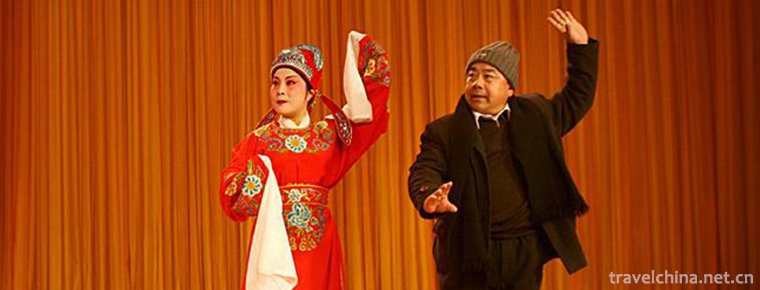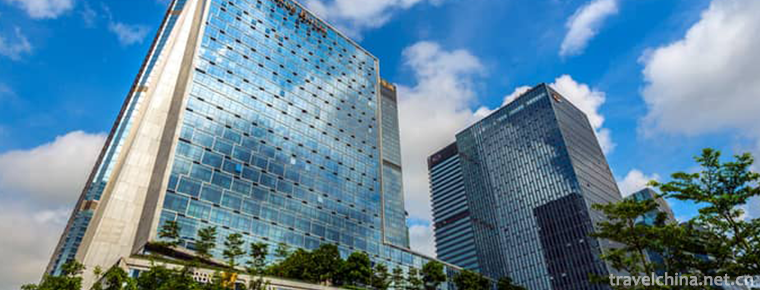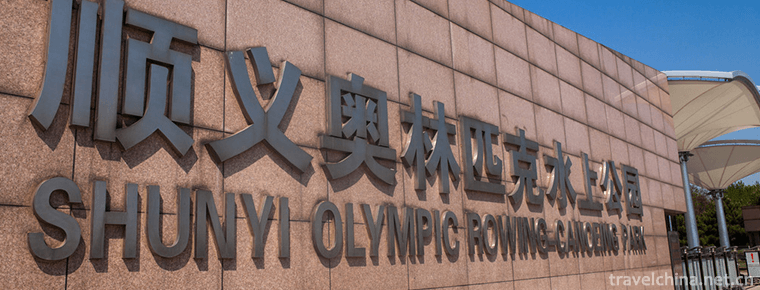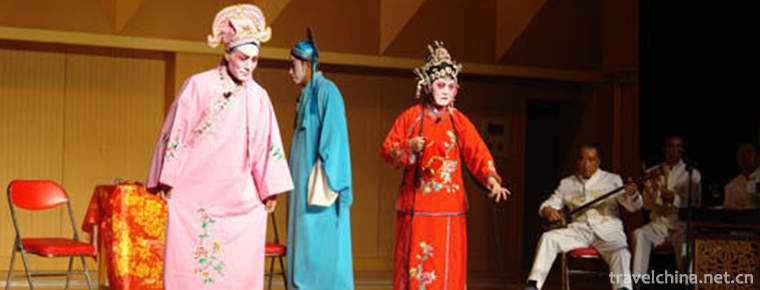2018-12-16

- By ChinaWiki.net
- Chinese Edition
- 2019-07-12
Yihuang Opera
Yihuang Opera, formerly known as Yihuang Ban and Yihuang Diao, is one of the national intangible cultural heritage in Yihuang, Nancheng, Nanfeng and Guangchang counties of Jiangxi Province, as well as in Northeast Jiangxi, Southern Jiangxi and Western Fujian.
The history of Yihuang Opera can be traced back to the "blowing tune" of Western Qin Opera in the late Ming Dynasty. The Yihuang Opera evolved from the late Qing Dynasty, which absorbed other tunes and plays and formed a comprehensive variety of tunes. In addition, there are counter-tones, suona, Xipi, Zhejiang tunes, blowing tunes, North-South Ci and so on, and men and women are in the same tune. Clean foot should be divided into big flowers, two flowers, three flowers and four flowers. There are some ancient customs in the performing arts.
On May 20, 2006, Yihuang Opera was approved by the State Council of the People's Republic of China to be included in the first batch of national intangible cultural heritage list, the heritage number: IV-38.
historical origin
Yihuang Opera was developed in Yihuang County in the early Qing Dynasty. Since the pronunciation of Yihuang Opera in Jiangsu and Zhejiang was not divided into Yihuang Opera and Yihuang Opera, it was later called Erhuang Opera.
Yihuang Opera can be traced back to the Western Qin Opera of Ming Dynasty. The tunes of the Western Qin Opera include "two criminals" accompanied by Suona and "blowing tunes" accompanied by flute. Among them, the "second offender" has become a unique Yihuang tune because of its great development compared with the "second offender" in the Western Qin Opera.
In the early period of Qianlong reign of the Qing Dynasty, Yiling changed his original accompaniment instrument, the cylindrical huqin, to the main instrument. From then on, Suona "two criminals" and flat "playing tune" became the huqin tune.
Li Tiaoyuan, a Qing Dynasty dramatist, once wrote in Yucun Opera Tales that Huqin Tune originated from Jiangyou, also known as Erhuang Tune. The birth of Huqin tune marks the increase of Banqiang music in the south.
Cultural characteristics
Music for voices in a Chinese Opera
The tunes of Yihuang Opera mainly include Yihuang Opera, Anti-tune Opera, Suona Erfan Opera, Xipi Zhe Opera Opera Opera, Southern and Northern Ci Opera, etc. At the same time, it retains the blowing tune of the Western Qin Opera, commonly known as "flat blowing tune". Yihuang Opera is more primitive, straight, with few and short dragging tones. Laosheng and Laodan use their own voices, while Xiaosheng combines their big and small voices, and the final tone is often raised by eight degrees, with the same tone for men and women.
The acoustic cavity belongs to the plate cavity of random projectile system. Singing is characterized by the combination of small voice, real voice and false voice, and big voice in other professions. When singing, we should pay attention to articulating clearly and following the words. In traditional singing, there are many linings, almost every sentence. Moisturizing techniques such as leaning, Boeing and sliding tones are commonly used in the cavity. Language uses Zhongzhou rhyme, but clowns often use Yihuang dialect.
Foot color
The role of Yihuang Opera can be divided into Zhengsheng, Xiaosheng, Laosheng, Vice-Sheng, Zhengdan, Xiaodan, Erdan, Laodan, Dahua, Erhua, Sanhua and Four Flowers in modern times. Its performance is rough and simple, rigorous and stable. In some plays, the characters ride horses, instead of using the whip to replace the horse body, they tie the horse shape to the body in the way of Yuan and Ming Zaju operas, and dance with the sound of the hooves of the gongs and drums to make the running horse's body.
Body section
The performances of Yihuang Opera include: repairing books, reading letters, playing memorials, getting on and off horses, lighting lights, sword-dancing, drinking, ascending hall, sitting accounts, etc. The essential basic skills include "back-grabbing", "tiger-poking", "swivel", "Kezi", "zombie" and "throwing start". The basic steps include "square step", "pad step", "kneeling step". ” Wait. Danjiao performances include opening and closing doors, sweeping, fuqin, curtain rolling, dressing, etc. The essential basic skills include "lying in the clouds", "turning over the kite", "Oolong columnar" and "sleeve work".
accompaniment
In the early stage of Yihuang Opera, there were three types of "Suona Second Offenders" accompanied by flute. In the early Qianlong period of the Qing Dynasty, "Yihuang Tune" was replaced by Huqin as the main musical instrument, and the tunes of "blowing tune" and "two offenders" were unified. The "two offenders" were divided into four kinds of wrenches. The playing tune became an ordinary wrench, forming a widely circulated "Huqin Tune".
Representational repertoire
The traditional operas of Yihuang Opera are mostly based on historical stories, scripts, classical novels, folklores and myths. Representational repertoire: Qingguan Book, Medicine Tea Record, Sanguantang, Qishuangdao, Four Kingdoms Qi, Female and Male Whips, Qingyang Tu, Shuanglong Hui, Shangtaitai, Laojuntang, Flying Dragon Biography, Yueming Tower, Jiangdong Bridge, Spring and Autumn Matching, Longfeng Pavilion, Torture Spring Peach, Eight Immortals Drifting Sea, Selling Pears and Recruiting Kinship Wait.
Inheritance and Protection
Inheritance value
Yihuang Opera occupies a prominent position in the history of Chinese opera. Its formation, development and decline have become a microcosm of the history of Chinese opera. Therefore, Yihuang Opera is an ideal specimen for exploring and studying the law of evolution of Chinese opera.
Current situation of inheritance
In modern society, the survival and development of Yihuang Opera are facing many crises. Especially in 1989, after the disbandment of Yihuang Opera Troupe, the ancient opera of Yihuang Opera is gradually in an endangered situation.
Heritage figures
Deng Yi, the representative successor of the fifth batch of national intangible cultural heritage projects, declared in Yihuang County, Jiangxi Province. Declaration items: Yihuang Opera.
protective measures
On May 29, 2018, in the dance room of Yihuang Experimental Primary School, students were practicing the basic movements of "opera gymnastics". Yihuang County protects and inherits non-legacy culture in various forms. Traditional opera extracts body movements from Yihuang opera, integrates traditional opera music melody and combines with modern radio gymnastics to make students feel the charm of traditional culture while exercising their bodies.
social influence
Honorary recognition
In July 1960, Yihuang Opera participated in the second Jiangxi Opera Festival and the first provincial Youth Actors'Festival. Qiwang Crying Hall was awarded the performance prize. Applied Xian, Wu Songling and Xiong Biyun were awarded the actors' prize.
In 1981, young actors of Yihuang Opera performed Meng Liang's Moving Army in the provincial capital. Zhang Xiaoping and Zhang Jianzhong won performance awards and recorded them on TV.
In the winter of 1983, Yihuang Opera Modern Drama "Wife, Children, Old and Young" participated in the regional production and performance, and won the drama and performance award.
Important performances
On September 27, 2016, Yihuang Opera "Four Dreams of Linchuan" appeared at the third China (Fuzhou) Tang Xianzu Art Festival Exhibition of Excellent Dramas.
In the autumn of 1982, Yihuang Opera adapted and rehearsed three traditional operas in The Story of Purple Hair: Bie Hai, Sichai and Yuanchai. They participated in the celebration of Tang Xianzu's 36th anniversary held by the Ministry of Culture, the Chinese Opera Association, the Jiangxi Provincial Cultural Department and the Provincial Opera Association.

Ask a Question
Your email address will not be published.



0 Questions